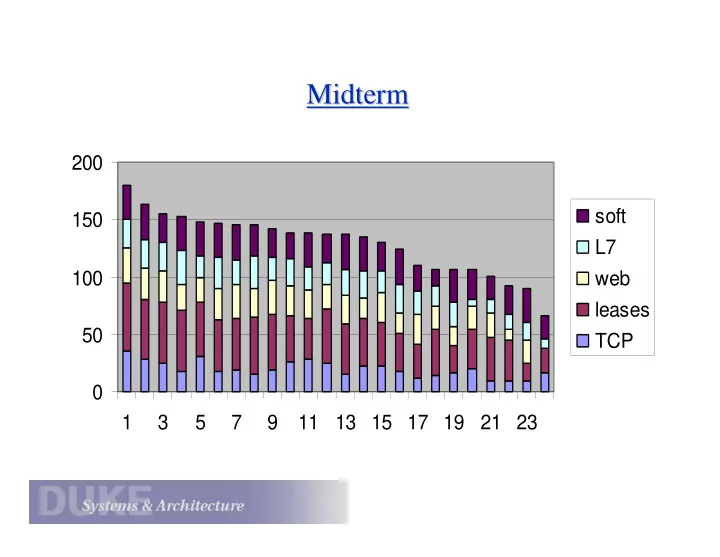

Midterm Midterm 200 soft 150 L7 100 web leases 50 TCP 0 1 3 5 7 9 11 13 15 17 19 21 23
Problem 1 Problem 1 • Why OK with HTTP 1.0 LARD or L7: route connection by URL or SLB at SYN DNS (Akamai): route at connection setup by domain name • Why OK with NFS/UDP every request/reply an independent packet, so can route these independently • HTTP 1.1 and NFS: persistent connections can’t route request/reply on the same stream independently • No effect on Akamai • If route requests on connection grain, L7 or LARD will lose locality.
Leases Leases 1) overhead vs. recovery time not callback time (-3) 2) server grabs lease if on wrong side of partition. • reject writes e.g., timestamp writes and reject at target 3) failover, wait lease interval clients renew need failure detector and group membership could use quorum
Large- -Scale Web Caching Scale Web Caching Large • explain basic mechanism • larger populations for same hit rate, + flatter curve • ignoring deemphasizes benefit of cooperative caching 100% cacheable hit rate with sufficiently large cache • effect of popularity (5 points) • say something about traces (5 points)
URL Hashing URL Hashing LAN • good locality ==> good caching, less storage needed • possibility of unbalance • simple switch • failure/reconfig issue (+ or -) • Alternative: e.g., LARD WAN • see above • one hop, but no geo-locality (5) • alternative: summary cache
Recommend
More recommend